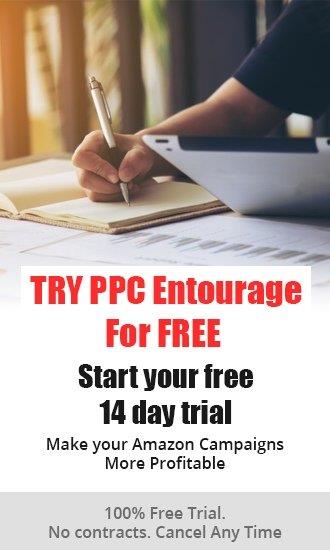Keywords are the lifeblood of Amazon advertising.
Strategizing your keywords to target potential customers during the different stages of the Customer Buying Cycle is an excellent way to improve the performance of your Amazon listings.
There are different types of keywords, and they vary according to their purposes.
This blog will help you to understand the different types of keywords and how to use this information to drive more traffic and qualified buyers to your listings.
Amazon Target Audience Keywords
Market Segment Keywords are generic keywords associated with an industry or brand. They are terms a target audience uses to search for general information within a vertical. Terms may be broadly associated with an industry or more defined for niche marketing purposes. An example of this would be ‘cat accessories’.
Tip: Keep in mind that sellers should make sure to allocate a sufficient budget in order to reach a broader audience of shoppers.
Short-Tail Keywords are popular, broad search terms that have a very high volume of search traffic. These terms are usually one or two words, and they are very competitive to rank for. An example of this would be 'running shoes'. These types of broad keywords align with the Discovery phase of the customer buying cycle because shoppers are not being specific about the details of the running shoe they are looking to purchase (women’s, men’s, brand name, color, etc.).
Broad Match Keywords allow the ad to show if a shopper searches for a similar phrase, singular or plural form, misspelling, stemming, synonym, or another related variation of the broad match term. An example of this would be an ad for the broad match keyword ‘shoes’ would show during searches for terms such as shoe, shoes for sale, shoe store, or buy shoes. These types of keywords could be useful during the Discovery phase of the Customer Buying Cycle in order to ‘cast a wide net’ when raising awareness about your products.
Customer-Defining Keywords are search phrases that identify a specific subset of customers or audience. In these searches, customers use words or phrases to define themselves. These keywords align with the Consideration phase of the customer buying cycle. An example of these types of keywords would be running shoes for women.
Mid-Tail Keywords fall between short-tail keywords, which have a high volume of traffic but are highly competitive, and long-tail keywords, which have a small volume of traffic but with less competition and higher conversion rates. These terms are usually two to three words and are slightly more descriptive. An example of these types of keywords would be white running shoes.
With Phrase Match Keywords, the search query may have words that come before or after the phrase, but the exact phrase must be included in the search for it to show to searchers. For example, an ad for the phrase match keyword women’s shoes would show during searches for terms such as women’s shoe sale, women’s shoe stores, and stores for women’s shoes.
Long-Tail Keywords are the longest search terms and are very targeted to a specific topic or audience. These terms typically have low search traffic and are low-competition keywords, which makes them easier to rank for. Because they are more specific, they generally have higher conversion rates. An example of these types of keywords would be full length mirror with storage.
Transactional keywords, or “do” keywords, are terms users search for when they are ready to make a purchase. Searchers use transactional keywords when they are in the conversion phase of the purchase funnel. They already know what they want to buy, and they use very specific buying keywords to help them find the right place to make their purchase. An example of these types of keywords would be prime day TV sale.
Product keywords are terms related to specific brand offerings. These types of keywords are phrases that directly reference a company’s products or services. Brands should have a keyword strategy for each of their products and services so customers and prospects can find their offerings through search. An example would be Nike Flex Contact. These types of keywords are used during the Decision phase of the CBC.
Branded keywords are search phrases that include a brand’s name or other branded terms. These types of keywords may include only the brand name or the brand name along with a product type, product name, or another descriptive search phrase. An example would be, Nike running shoes.
Competitor keywords are types of keywords that target brand names of competing businesses, products, or services. It’s beneficial for a brand to research competitor keywords because it gives the brand an opportunity to attract a similar audience of interested, potential buyers. An example of a competitor keyword for Nike could be Reebok running shoes.
Sellers who are familiar with the different types of keywords are able to create more informed and strategic marketing plans. By knowing all of their options, sellers can find the best keywords to help them to connect with their target audiences, drive search traffic, and boost conversions.
Targeting your potential customers during the right stage of their buying journey is critical for achieving success as an Amazon seller. The PPC Entourage Keyword/Target Research Cheat Sheet ties everything together...the strategies, campaigns and best practices for keyword usage in the different stages of the Customer Buying Cycle.
It also reveals the different ad types and how to leverage the different Amazon tools, so that you can create a holistic plan for aligning your Amazon advertising with the CBC. Be sure to download this free resource today.
Entourage: Software to Scale Amazon Ads and Results Driven Management.











